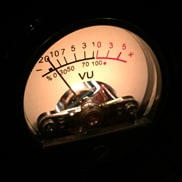『ゼンハイザーのならし方 vol.1』の続きです。
ゼンハイザーのHD419というヘッドホンですが、
なぜ、ナローレンジとの評価になるのでしょうか?
縦軸に音圧、横軸に周波数をとり、グラフを作成します。
『ワイドレンジ』をグラフにすると以下のようになります。

一方『ナローレンジ』をグラフにすると以下のようになります。

ゼンハイザーHD419は以下のようです。

十分にワイドレンジなのですが、
低域と高域のバランスが良くないのです。
聴き様によっては『ナローレンジ』に聴こえるということなのでしょう。
これを電気的に補正してやれば『ワイドレンジ』のグラフのようになるはずです。
簡単に補正できるiPadを使ってみましょう。
次回に続きます。
(このテストに使用したHD419用にカスタマイズされたヘッドホンアンプhpa60/taの試作機は
ヘッドホンと一緒にアウトレットショップで販売しています。)
社屋横の水路にいるホタルですが、
今が最盛期のようです。
昨夜は100匹程飛んでいました。

I am reproduced in Sennheiser! vol.2
It is a continuation of "I am reproduced in Sennheiser! vol.1"
Why do HD419 headphone of Sennheiser
become evaluation of a "narrow range"?
Sound pressure is taken along a vertical axis,
frequency is taken along a horizontal axis, and a graph is created.
A "wide range" is as follows.

A "narrow range" is as follows.

"Sennheiser HD419" is as follows.

It is wide-range enough.
The balance of bass and treble is not good.
It may become a "narrow range", if it is heard and depends like.
If this is rectified electrically,
it will become like a "wide-range" graph.
Let's use iPad which can be rectified easily.
To be continued.
The firefly which is present in the waterway beside an office building is the golden age.
I was able to see about 100 firefly last night.


















